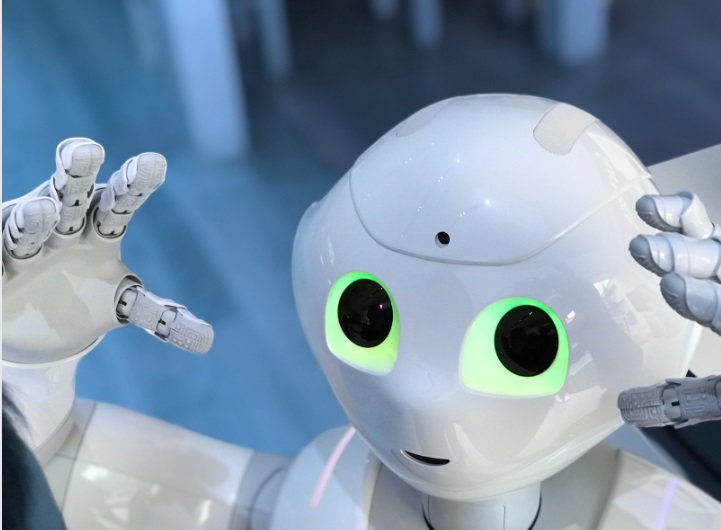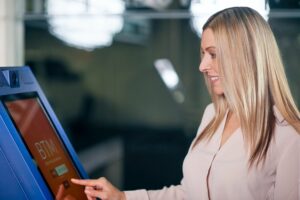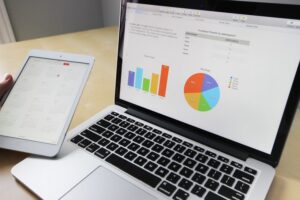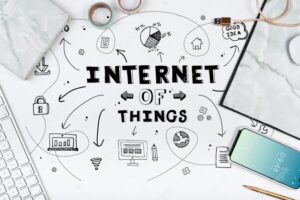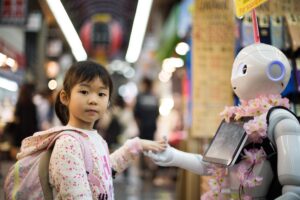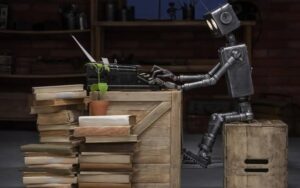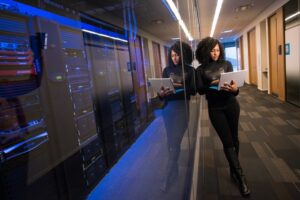The debate over the encroachment of machines replacing human jobs and the emergence of collaborative robots (cobots) has taken center stage. This discourse holds immense relevance regarding the future of employment, industry efficiency, and the coexistence of humans and advanced technology.
This discourse encompasses broader questions about the necessity of adaptability in the face of automation and the opportunities from the coexistence of humans and cobots. As industries evolve, finding the equilibrium between these two paradigms is crucial to shaping a workforce that thrives in an increasingly automated world.
Understanding Robots and Cobots
“Robots and cobots represent distinct categories of machines with unique characteristics and applications across various industries.”
Robots are autonomous machines that perform tasks independently, often with artificial intelligence and automation. They can operate without human intervention and execute a wide range of functions. Robots have applications in numerous industries, such as manufacturing, automotive and logistics.
Conversely, cobots work alongside humans in a shared workspace. They collaborate directly with human workers, enhancing their capabilities rather than replacing them. These machines often have advanced sensors and safety features to ensure safe human interaction. Health care workers can use cobots to assist in surgery and patient care. Scientists can also use them in laboratories for tasks like pipetting and handling delicate instruments.
The Impact of Automation
Automation has significantly impacted the job market, with positive and negative consequences. It has transformed industries, streamlined processes and led to the creation of new jobs while also raising concerns about job displacement in specific sectors.
Here are some examples of industries where robots have replaced human workers:
Manufacturing Robots handle tasks like welding and assembly, improving precision but reducing manual labor demand.
Automotive Robots aid in car assembly and welding, enhancing efficiency while reducing the need for human workers.
Agriculture Automation with autonomous tractors and robotic harvesters boosts productivity but decreases farm labor requirements.
“Warehousing Robots increase efficiency in picking and packing orders but reduce manual labor positions.”
Service industry Chatbots and virtual assistants automate customer support and routine tasks, impacting customer service jobs.
It’s essential to note that while automation has displaced some jobs, it has also created new opportunities. For instance, the development, maintenance, and operation of robots and automation systems have increased employment in robotics engineering, programming and technical support.
Collaborative Robotics in Action
Cobots have proven their effectiveness in the mentioned industries as well. They collaborate with human workers, bringing about several advantages, including heightened productivity and enhanced safety.
Manufacturing Cobots excel in precision assembly, enhancing product quality and production speed through collaboration with human operators.
Health care They assist surgeons with delicate procedures, reducing human errors and improving precision for safer operations.
Logistics and warehousing Cobots aid in order fulfillment, alleviating physical strain on human workers, promoting safety and increasing efficiency.
Agriculture They streamline fruit harvesting, ensuring crop quality and higher yields through collaborative efforts with human workers.
Laboratories In research settings, cobots handle precise tasks like pipetting and instrument handling, improving experiment reliability through collaboration with scientists.
The key benefit of cobots lies in their ability to work alongside humans, enhancing productivity by combining their strengths. Moreover, their advanced sensors and safety features make them safe to work with, reducing the risk of accidents and injuries.
Addressing Common Concerns
Common fears and misconceptions about automation and job loss often revolve around believing machines will entirely replace human workers. However, experts say that while automation does impact specific jobs, it also creates new opportunities for and emphasizes the human role in cobot-driven industries.
Automation and mass unemployment Historical evidence shows automation creates new jobs, and cobots enhance roles, ensuring a continued human workforce.
Robots replacing all manual labor jobs Humans are essential for complex tasks — cobots handle repetitive work, allowing people to focus on strategic aspects.
Automation vs. job growth Industries embracing automation experience growth, and cobots boost efficiency and job creation in related fields.
Irrelevance of human skills Natural capabilities like critical thinking remain valuable, while cobots rely on human oversight and decision-making.
Dehumanized workplaces with automation Collaborative cobots enhance safety and job satisfaction, freeing people for creative and fulfilling tasks.
While concerns about job loss due to automation are valid, the collaborative nature of cobots offers a path to a future where people and machines work together synergistically.
Emphasizing the human role in cobot-driven industries highlights the potential for job enhancement, skills development and continued workforce participation in an increasingly automated world.
The Road to a Collaborative Future
Cobots are not here to replace humans but to collaborate with them, creating a future where both can harness their strengths. This offers numerous opportunities for increased productivity, safety and job enhancement.
It’s time to welcome this future with open arms and a positive outlook. Embracing the possibilities of cobot-human teamwork lets people lead the way into a more efficient, innovative and fulfilling work environment. Together, humans and robots are shaping a future where collaboration reigns and the potential for progress knows no bounds.

